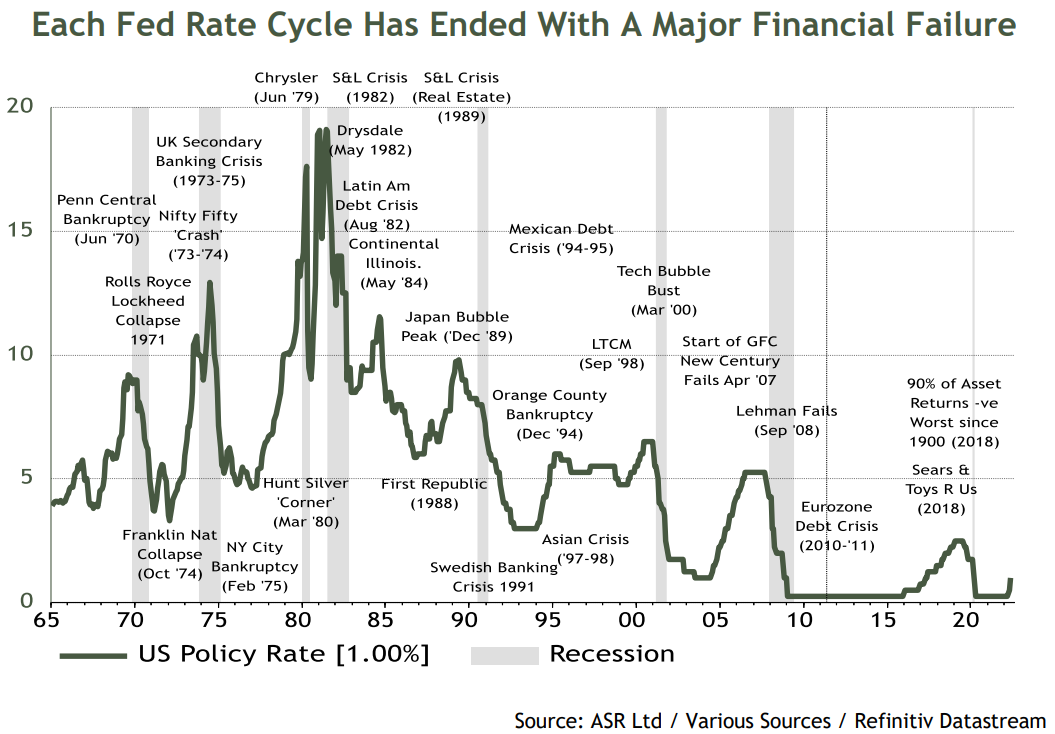“It’s the Fed’s fault!”
That has been the rallying cry for so many misguided analyses and criticisms going back to the 1990s, if not before.
Has the financial press ever written a less insightful and lazier line than the “Fed-driven rally?” As if a columnist actually knows what is driving the market at any given moment in time (or year, for that matter).
Blaming the Fed for all of the evils in the world has become a cottage industry — certainly for booksellers: The Lords of Easy Money, The Tyranny of the Federal Reserve, Fed Up, End The Fed, and the father of the genre, The Creature from Jekyll Island.
I am no Fed apologist, either: The Federal Reserve has been a subject of 717 posts on this site — both pre- and post-Great Financial Crisis (GFC). When I created my list of who to blame for the GFC, Fed Chair Alan Greenspan was #1, The Fed’s monetary policy was #2, and the Federal Reserve (again) in its role as bank regulator was #11. Bailout Nation, chapter two, is titled “The creation of the Federal Reserve and its role in creating our Bailout Nation.”
Despite those valid criticisms, I at least try to avoid the easy, lazy tendency to place all of the world’s ills at the feet of the U.S. central bank. To be sure, monetary policy errors are, in the parlance of the battlefield, a “target-rich environment.” But at a certain point, you must acknowledge the way the world actually works and avoid overly simplistic, post-hoc narratives. These three Cs explain why:
Complexity: The world is complicated; only rarely is one single factor THE driver of an economic outcome.
Counterfactual: What does the economy look like without the U.S. central bank? What does the world look like without its liquidity?
Causation: Knowing the exact, specific cause of any given event is extremely difficult. We can hypothesize and debate, but we rarely know the exact cause as precisely as we pretend to.
I could probably add a fourth C: Certainty. I am genuinely astonished over exactly how certain so many pundits are that they have deduced the causation of all of our woes, and laid it at the feet of the Fed.
Rather than blaming an interventionist, market-distorting, TINA-causing Federal Reserve, just admit you had a bad month/year/quarter, and move on. But know that allocators use that excuse to identify whatever underperforming strategy you are currently saying is Ben Bernanke/Janet Yellen/Jerome Powell’s fault, and not allocate capital to it.
I do not have a dog in this fight; If a decade ago, you would have told me I would be writing this post, I would have laughed you out of the room. However, I detest the sort of lazy analysis that leads investors down an ill-considered, and ultimately money-losing path…
Previously:
How Much Shall We Blame the Fed? (February 19, 2020)
How Greenspan Became the ex-Maestro (August 11, 2014)
Who is to Blame, 1-25 (June 29, 2009)
A Consensus is Developing: Blame Greenspan (June 8, 2006)
Single vs. Multiple Variable Analysis in Market Forecasts (May 4, 2005)


